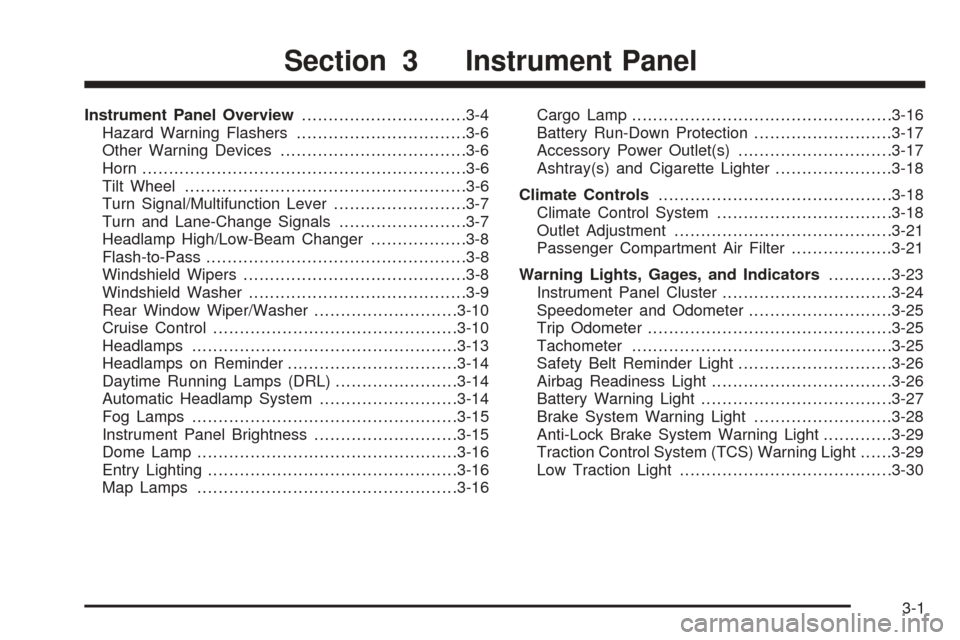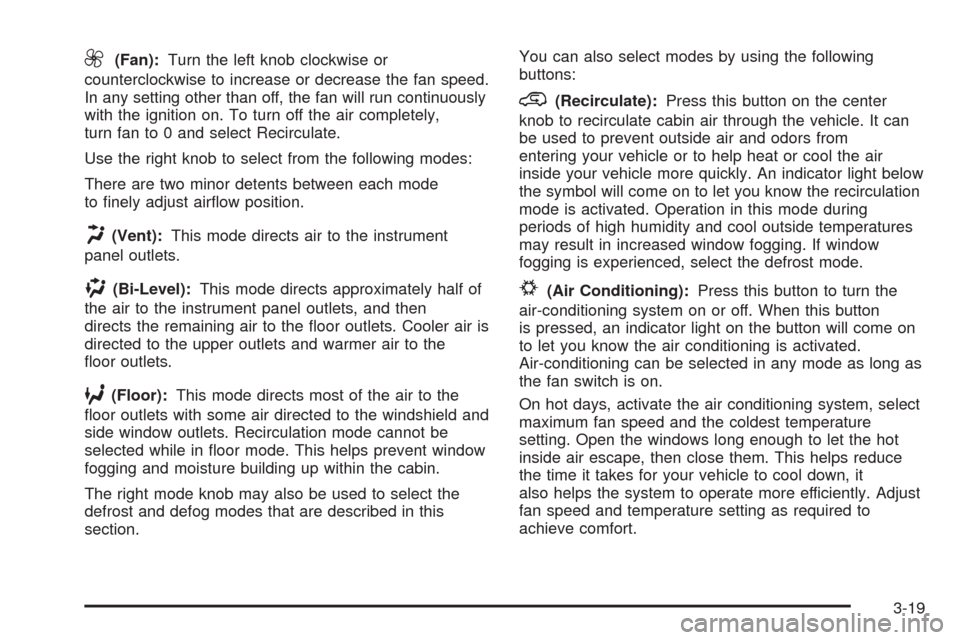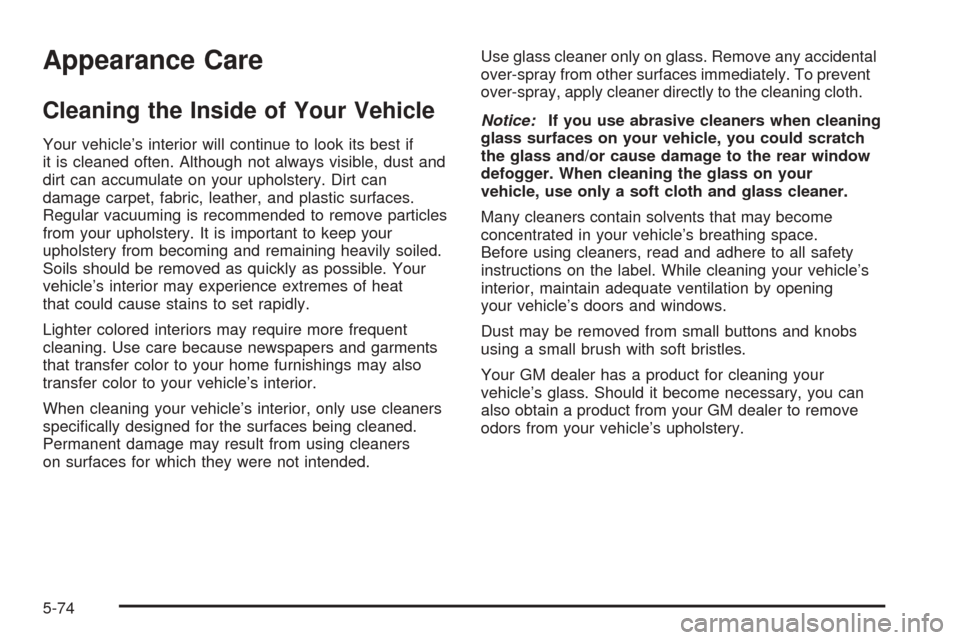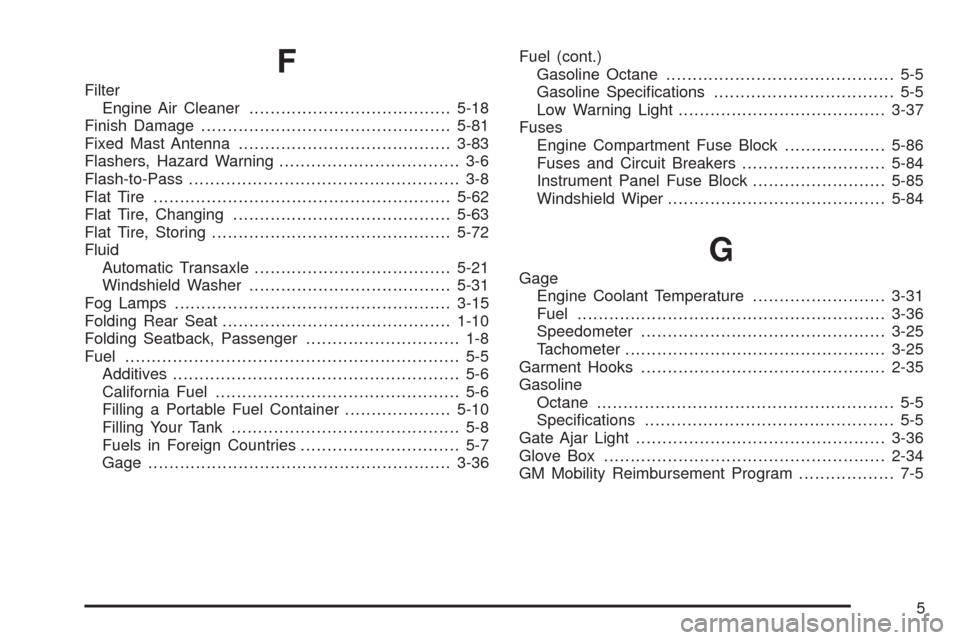2006 CHEVROLET EQUINOX fog light
[x] Cancel search: fog lightPage 117 of 382

Instrument Panel Overview...............................3-4
Hazard Warning Flashers................................3-6
Other Warning Devices...................................3-6
Horn.............................................................3-6
Tilt Wheel.....................................................3-6
Turn Signal/Multifunction Lever.........................3-7
Turn and Lane-Change Signals........................3-7
Headlamp High/Low-Beam Changer..................3-8
Flash-to-Pass.................................................3-8
Windshield Wipers..........................................3-8
Windshield Washer.........................................3-9
Rear Window Wiper/Washer...........................3-10
Cruise Control..............................................3-10
Headlamps..................................................3-13
Headlamps on Reminder................................3-14
Daytime Running Lamps (DRL).......................3-14
Automatic Headlamp System..........................3-14
Fog Lamps..................................................3-15
Instrument Panel Brightness...........................3-15
Dome Lamp.................................................3-16
Entry Lighting...............................................3-16
Map Lamps.................................................3-16Cargo Lamp.................................................3-16
Battery Run-Down Protection..........................3-17
Accessory Power Outlet(s).............................3-17
Ashtray(s) and Cigarette Lighter......................3-18
Climate Controls............................................3-18
Climate Control System.................................3-18
Outlet Adjustment.........................................3-21
Passenger Compartment Air Filter...................3-21
Warning Lights, Gages, and Indicators............3-23
Instrument Panel Cluster................................3-24
Speedometer and Odometer...........................3-25
Trip Odometer..............................................3-25
Tachometer.................................................3-25
Safety Belt Reminder Light.............................3-26
Airbag Readiness Light..................................3-26
Battery Warning Light....................................3-27
Brake System Warning Light..........................3-28
Anti-Lock Brake System Warning Light.............3-29
Traction Control System (TCS) Warning Light......3-29
Low Traction Light........................................3-30
Section 3 Instrument Panel
3-1
Page 131 of 382

Fog Lamps
If your vehicle has this feature, use your fog lamps for
better visibility in foggy or misty conditions.
The button for your fog
lamps is located in the
instrument panel above
the radio.
Push the button to turn the fog lamps on or off.
When using fog lamps, the parking lamps or low-beam
headlamps must be on.
A light on the button will come on when the fog lamps
are on. Fog lamps will go off whenever you turn the
high-beam headlamps on. When the high-beam
headlamps are turned off, the fog lamps will come
on again.
Some localities have laws that require the headlamps to
be on along with the fog lamps.
Instrument Panel Brightness
This feature controls the brightness of the instrument
panel lights.
The control for this feature
is located on the instrument
panel to the left of the
steering column.
Turn the control up to brighten the lights or down to
dim them.
3-15
Page 135 of 382

9(Fan):Turn the left knob clockwise or
counterclockwise to increase or decrease the fan speed.
In any setting other than off, the fan will run continuously
with the ignition on. To turn off the air completely,
turn fan to 0 and select Recirculate.
Use the right knob to select from the following modes:
There are two minor detents between each mode
to �nely adjust air�ow position.
H(Vent):This mode directs air to the instrument
panel outlets.
)(Bi-Level):This mode directs approximately half of
the air to the instrument panel outlets, and then
directs the remaining air to the �oor outlets. Cooler air is
directed to the upper outlets and warmer air to the
�oor outlets.
6(Floor):This mode directs most of the air to the
�oor outlets with some air directed to the windshield and
side window outlets. Recirculation mode cannot be
selected while in �oor mode. This helps prevent window
fogging and moisture building up within the cabin.
The right mode knob may also be used to select the
defrost and defog modes that are described in this
section.You can also select modes by using the following
buttons:
@(Recirculate):Press this button on the center
knob to recirculate cabin air through the vehicle. It can
be used to prevent outside air and odors from
entering your vehicle or to help heat or cool the air
inside your vehicle more quickly. An indicator light below
the symbol will come on to let you know the recirculation
mode is activated. Operation in this mode during
periods of high humidity and cool outside temperatures
may result in increased window fogging. If window
fogging is experienced, select the defrost mode.
#(Air Conditioning):Press this button to turn the
air-conditioning system on or off. When this button
is pressed, an indicator light on the button will come on
to let you know the air conditioning is activated.
Air-conditioning can be selected in any mode as long as
the fan switch is on.
On hot days, activate the air conditioning system, select
maximum fan speed and the coldest temperature
setting. Open the windows long enough to let the hot
inside air escape, then close them. This helps reduce
the time it takes for your vehicle to cool down, it
also helps the system to operate more efficiently. Adjust
fan speed and temperature setting as required to
achieve comfort.
3-19
Page 136 of 382

The air-conditioning system removes moisture from the
air, so you may sometimes notice a small amount of
water dripping underneath your vehicle while idling
or after turning off the engine. This is normal.
Defogging and Defrosting
Fog or frost on the inside of windows is a result of high
humidity (moisture) condensing on the cool window
glass. This can be minimized if the climate control
system is used properly. Use the defog mode to clear
the windows of fog or moisture and warm the
passengers. To avoid fogging windows on rainy and
humid days at temperatures above freezing, run the air
conditioning compressor. Also, it is best to avoid the
use of recirculation mode except when maximum
A/C performance is needed or for short times to avoid
exterior odors. Use the defrost mode to remove fog
or frost from the windshield more quickly. When
you select either of these modes (or the �oor mode
which also helps defog the windows slightly), the system
runs the air-conditioning and cancels recirculation
mode to dry the air; however, the recirculation light will
stay on. For best results, clear all snow and ice from
the windshield before defrosting.Turn the right knob to select the defog or defrost mode.
-(Defog):This mode directs half of the air to the
windshield, the side window outlets and to the �oor
outlets. When this mode is selected, the system will turn
recirculation mode off and run the air conditioning
compressor unless the outside air is at or below
freezing. Recirculation mode cannot be selected while in
defog mode; however, the recirculation light will stay
on. It is best to avoid the use of recirculation mode
except when maximum A/C performance is needed or
for short times to avoid exterior odors.
0(Defrost):This mode directs most of the air to the
windshield and the side window outlets, with some air
directed to the �oor outlets. When this mode is selected,
the system will turn recirculation mode off automatically
and will run the air conditioning compressor unless the
outside air is at or below freezing. Recirculation mode
cannot be selected while in the defrost mode; however,
the recirculation light will stay on. To defrost the windows
faster, turn the temperature knob clockwise to the
warmest setting.
3-20
Page 137 of 382

Rear Window Defogger
The rear window defogger uses a warming grid to
remove fog from the rear window.
The rear window defogger will only work when the
ignition is in RUN.
<(Rear):Press this button to turn the rear window
defogger on or off. An indicator light on the button
will come on to let you know that the rear window
defogger is activated.
The rear window defogger will only work when the
ignition is in RUN. The rear window defogger will stay
on for approximately 15 minutes after the button is
pressed, unless the ignition is turned to ACC or LOCK.
If turned on again, the defogger will only run for
approximately �ve minutes before turning off. The
defogger can also be turned off by pressing the button
again or by turning off the engine.
Notice:Do not use anything sharp on the inside of
the rear window. If you do, you could cut or
damage the warming grid, and the repairs would not
be covered by your warranty. Do not attach a
temporary vehicle license, tape, a decal or anything
similar to the defogger grid.
Outlet Adjustment
Use the louvers located on the air outlets to change the
direction of the air�ow.
Operation Tips
Clear away any ice, snow, or leaves from the air
inlets at the base of the vehicle that may block
the �ow of air into your vehicle.
Use of non-GM approved hood de�ectors may
adversely affect the performance of the system.
Keep the path under the front seats clear of objects
to help circulate the air inside of your vehicle more
effectively.
Passenger Compartment Air Filter
The passenger compartment outside air is routed
through a passenger compartment �lter. The �lter
removes certain particles from the air, including pollen
and dust particles. Reductions in air�ow, which may
occur more quickly in dusty areas, indicate that the �lter
needs to be replaced early.
The �lter should be replaced as part of routine
scheduled maintenance. SeeScheduled Maintenance
on page 6-4for when to replace the �lter.
3-21
Page 320 of 382

Appearance Care
Cleaning the Inside of Your Vehicle
Your vehicle’s interior will continue to look its best if
it is cleaned often. Although not always visible, dust and
dirt can accumulate on your upholstery. Dirt can
damage carpet, fabric, leather, and plastic surfaces.
Regular vacuuming is recommended to remove particles
from your upholstery. It is important to keep your
upholstery from becoming and remaining heavily soiled.
Soils should be removed as quickly as possible. Your
vehicle’s interior may experience extremes of heat
that could cause stains to set rapidly.
Lighter colored interiors may require more frequent
cleaning. Use care because newspapers and garments
that transfer color to your home furnishings may also
transfer color to your vehicle’s interior.
When cleaning your vehicle’s interior, only use cleaners
speci�cally designed for the surfaces being cleaned.
Permanent damage may result from using cleaners
on surfaces for which they were not intended.Use glass cleaner only on glass. Remove any accidental
over-spray from other surfaces immediately. To prevent
over-spray, apply cleaner directly to the cleaning cloth.
Notice:If you use abrasive cleaners when cleaning
glass surfaces on your vehicle, you could scratch
the glass and/or cause damage to the rear window
defogger. When cleaning the glass on your
vehicle, use only a soft cloth and glass cleaner.
Many cleaners contain solvents that may become
concentrated in your vehicle’s breathing space.
Before using cleaners, read and adhere to all safety
instructions on the label. While cleaning your vehicle’s
interior, maintain adequate ventilation by opening
your vehicle’s doors and windows.
Dust may be removed from small buttons and knobs
using a small brush with soft bristles.
Your GM dealer has a product for cleaning your
vehicle’s glass. Should it become necessary, you can
also obtain a product from your GM dealer to remove
odors from your vehicle’s upholstery.
5-74
Page 373 of 382

F
Filter
Engine Air Cleaner......................................5-18
Finish Damage...............................................5-81
Fixed Mast Antenna........................................3-83
Flashers, Hazard Warning.................................. 3-6
Flash-to-Pass................................................... 3-8
Flat Tire........................................................5-62
Flat Tire, Changing.........................................5-63
Flat Tire, Storing.............................................5-72
Fluid
Automatic Transaxle.....................................5-21
Windshield Washer......................................5-31
Fog Lamps....................................................3-15
Folding Rear Seat...........................................1-10
Folding Seatback, Passenger............................. 1-8
Fuel............................................................... 5-5
Additives...................................................... 5-6
California Fuel.............................................. 5-6
Filling a Portable Fuel Container....................5-10
Filling Your Tank........................................... 5-8
Fuels in Foreign Countries.............................. 5-7
Gage.........................................................3-36Fuel (cont.)
Gasoline Octane........................................... 5-5
Gasoline Speci�cations.................................. 5-5
Low Warning Light.......................................3-37
Fuses
Engine Compartment Fuse Block...................5-86
Fuses and Circuit Breakers...........................5-84
Instrument Panel Fuse Block.........................5-85
Windshield Wiper.........................................5-84
G
Gage
Engine Coolant Temperature.........................3-31
Fuel..........................................................3-36
Speedometer..............................................3-25
Tachometer.................................................3-25
Garment Hooks..............................................2-35
Gasoline
Octane........................................................ 5-5
Speci�cations............................................... 5-5
Gate Ajar Light...............................................3-36
Glove Box.....................................................2-34
GM Mobility Reimbursement Program.................. 7-5
5
Page 375 of 382

L
Labeling, Tire Sidewall.....................................5-48
Lamps
Battery Run-Down Protection.........................3-17
Cargo........................................................3-16
Dome........................................................3-16
Fog ...........................................................3-15
Map ..........................................................3-16
LATCH System
Child Restraints...........................................1-42
Liftgate..........................................................2-10
Light
Airbag Readiness........................................3-26
Anti-Lock Brake System Warning...................3-29
Battery Warning..........................................3-27
Brake System Warning.................................3-28
Change Engine Oil......................................3-35
Daytime Running Lamps Indicator..................3-36
Engine Coolant Temperature Warning.............3-30
Gate Ajar...................................................3-36
Highbeam On.............................................3-36
Low Fuel Warning.......................................3-37
Low Traction...............................................3-30
Malfunction Indicator....................................3-31Light (cont.)
Oil Pressure...............................................3-34
Reduced Engine Power................................3-35
Safety Belt Reminder...................................3-26
Security.....................................................3-35
TCS Warning Light......................................3-29
Traction Control System (TCS) Warning..........3-29
Lighting
Entry.........................................................3-16
Loading Your Vehicle.......................................4-31
Lockout Protection............................................ 2-9
Locks
Automatic Door Lock..................................... 2-8
Delayed Locking........................................... 2-7
Door........................................................... 2-6
Lockout Protection......................................... 2-9
Power Door.................................................. 2-7
Programmable Automatic Door Unlock.............. 2-8
Rear Door Security Locks............................... 2-8
Loss of Control...............................................4-15
Low Fuel Warning Light...................................3-37
Low Traction Light..........................................3-30
Luggage Carrier..............................................2-35
Lumbar
Manual Controls............................................ 1-4
7